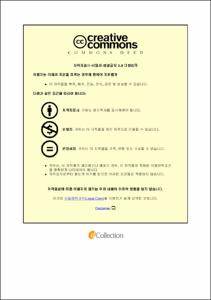지속가능한 고래관광을 위한 중요요인 평가에 관한 연구
- Alternative Title
- A Study on the Evaluation of Critical Factors for Sustainable Whale Tourism Development
- Abstract
- 조선시대의 사람들은 한국의 동해는 경해(鯨海)라고 부를 정도로 고래개체수가 풍부하였다(신증동국여지승람 [新增東國輿地勝覽], 1530). 일제강점기 후 한국사람이 지역적으로 직접 포경을 한 것은 1946년부터였지만 한국의 고래는 1800년대부터 러시아, 미국, 일본의 포경으로 급감하였고 1982년 IWC(International Whaling Commission)에서 상업적 포획량을 일시적으로 ‘0’으로 설정하는 모라토리엄(Moratorium)을 선언하기 전 동해에서 포획되는 고래개체 수는 이미 크게 감소하여 귀신고래와 참고래는 더 이상 잡히지 않았다.
우리나라는 2005년부터 울산 장생포에서의 고래박물관 건립과 제 57차 IWC총회 개최를 기점으로 고래관광을 활성화하였고 한국 울산에서의 고래관광은 10여 년 동안 울산지방자치기구인 울산 남구청과 남구도시관리공단을 중심으로 운영되고 있다.
하지만 고래관광의 활성화에 따른 고래고기수요의 증가와 희소가치에 따른 불법포경 및 유통의 증가로 인해 고래 개체수 감소가 우려되고 고래의 이용과 보호에 대한 가치관 충돌 또한 관광의 정체성 혼란을 가중시키고 있다. 또한 지난 10년간의 운영기간 동안 계속되는 적자와 과도한 투자로 고래관광 지속가능성이 우려된다(경상일보b. 2016). 이러한 기존의 지역관광개발형태인 공급자 중심의 개발프로젝트가 지속될 경우 실질적인 관광주체인 수요자, 지역주민 등의 이해관계자의 욕구를 충분히 대응하지 못하게 된다(Candela & Cellini, 2006; 변우희, 2009).
그러므로 본 연구에서는 경제적으로(Economically) 생태적으로(Ecologically) 지속가능한 고래관광의 운영을 위한 생태, 교육, 경제, 지역문화를 아우르는 종합적 평가지표의 필요성이 제고됨에 따라 지속가능한 고래관광을 위한 기초적 연구로서 국내외로 혼재되고 있는 ① 고래관광에 대한 개념을 정립하고 ② 고래관광의 활성화 요인을 종합적으로 평가할 수 있는 지표를 구축하여 ③ 향후 고래관광산업의 발전 방향을 모색하고자 한다.
During the Joseon period, the East Sea would be called ‘Gyeonghae’ due to a large number of whales. In the Republic of Korea, whaling was locally permitted in 1946. However, the number drastically dropped because the hunting of the marine mammal had already been carried out in Russia, the U.S. and Japan since 1800s. Before a moratorium on commercial whaling was introduced by the International Whaling Commission(IWC) in 1986, whale populations in the East Sea had plunged. Furthermore, Korean gray whales and fin whales weren’t found anymore in that area. With the suspension, whale hunting was banned in Korea as well. Even so, accidentally caught whales have been allowed to be distributed on the market with respect for local food culture.
With the establishment of Whale Museum and hosting of the 57th Annual Meeting of the International Whaling Commission(IWC) at Jangsaengpo in 2005, whale tourism was facilitated in earnest. This whale tourism has been operated by Nam-gu Office and Nam-gu City Management Corporation in Ulsan. However, the popularity of whale tourism has increased a demand for whale meat. At the same time, there has been concern over decrease in whale populations because of illegal whaling. In addition, a conflict between the use and protection of whales has caused confusion in tourism identity. Actually, there is a serious doubt on the sustainability of whale watching due to the decade-long deficit and excessive investments.
For the operation of whale tourism in moral and sustainable fashion, not as a short-term project, therefore, assessment indicators which cover ecology, education, economy and regional culture are needed. Hence, this study attempts to define a concept of whale tourism and propose a future direction for the sustainable growth and development of Korea’s whale tourism industry after developing such comprehensive assessment indicators as a basic research for the introduction of sustainable whale tourism.
To achieve the aim of this study, AHP(Analytic Hierarchy Process) was chosen as a main research tool and the factors were ranked by a comprehensive analysis of principal factors and detail factors.
The current study showed the following results. First, ecological environment(0.430) was indicated the most important factor of whale tourism assessment indicators. Moreover, Population(0.1302), Action for Cetacean protection(0.1031), Governance(0.0898) were critical factors. On the other hand, Accommodations(0.0085), Whale meat(0.0088) were unimportant factors than others.
- Issued Date
- 2017
- Awarded Date
- 2017. 8
- Type
- Dissertation
- Publisher
- 부경대학교
- Alternative Author(s)
- Kim Su Yeon
- Affiliation
- 부경대학교 대학원
- Department
- 대학원 해양수산경영학과
- Advisor
- 이상고
- Table Of Contents
- I. 서론 1
1. 연구배경 및 목적 1
2. 연구범위 및 방법 2
II. 선행연구 및 이론적 배경 4
1. 고래관광의 정의와 개요 4
2. 해외 주요국 고래관광 현황 9
3. 한국의 고래와 고래관광의 현황 14
4. 고래관광에 관한 선행연구 27
5. 국내외 고래관광 검토 및 고찰 32
6. 지표와 AHP 분석의 개요 35
7. 관광지표와 AHP 분석에 관한 선행연구 42
III. 분석 및 결과 46
1. 고래관광 개념 정립 46
2. 중요요인 평가요인 구축 50
3. 실증분석 결과 60
IV. 결론 및 논의 78
참고문헌 82
문헌 외 참고자료 90
부록 92
- Degree
- Master
- Files in This Item:
-
-
Download
 지속가능한 고래관광을 위한 중요요인 평가에 관한 연구.pdf
기타 데이터 / 1.69 MB / Adobe PDF
지속가능한 고래관광을 위한 중요요인 평가에 관한 연구.pdf
기타 데이터 / 1.69 MB / Adobe PDF
-
Items in Repository are protected by copyright, with all rights reserved, unless otherwise indicated.